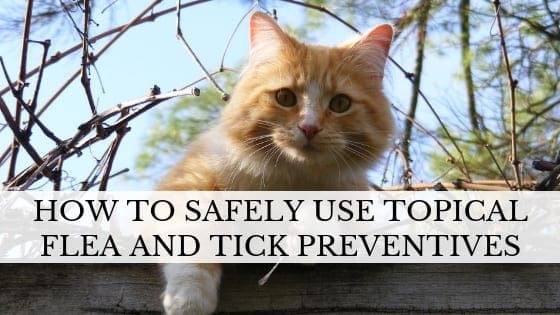
Fleas and ticks. Ewww, we don’t even want to think about them but it’s important to stay on top of this to prevent your cat from becoming a blood meal for parasites. Even indoor cats can get fleas and ticks, especially if you have a dog who could be bringing the little blood suckers inside. If you’re treating the dog but not treating the indoor cat then fleas and ticks could end up having a field day.
Just Because You Don’t See Them Doesn’t Mean They Aren’t There
Because cats are such fastidious groomers, you may never actually see a live flea on your kitty. You may, however, see the flea debris. Depending on your cat’s coat and how often you groom kitty, you may never notice any signs of flea infestation other than seeing non-stop scratching by your cat or, if there’s a flea allergy, changes in the cat’s skin and coat.
Choose Wisely
Talk to your veterinarian about the appropriate flea and tick products for use on your cat. These products are not one-size-fits-all. Your veterinarian will guide you on selecting the best and safest product for your individual cat.
Here are some important tips to remember:
- Never use a product meant for dogs on your cat
- Keep dogs and cats separated for 24 hours after applying topical products
- In a multicat home, if using a topical product, keep cats separated after application to prevent them from grooming each other
- Always read and follow label directions
- Check expiration date before using a product
- Watch for signs of allergy or other problems after administering a flea or tick preventive
- Before using ANY product on a kitten, make sure the product is intended for kittens. Check with your veterinarian
- don’t use ANY product on an old or ill cat without first consulting your veterinarian
- Don’t use flea and tick products on pregnant or nursing cats
- Make sure the product used is the right one for your cat’s weight
- Wash your hands after applying a topical product
- Mark on the calendar when the product has been administered so you can stay on the appropriate schedule
Nothing is more important than your cat’s safety.
Need More Information?
If you have questions about flea control products, talk with your veterinarian. Don’t buy over-the-counter products without first consulting your veterinarian.
For more information about cat behavior and training, refer to the books by Pam Johnson-Bennett. Pam’s books are available at bookstores and online. We’ve included links to Amazon here on our website.
If you have a question regarding your cat’s health, please contact your veterinarian. This article is not intended as a replacement for your cat’s veterinary care.
 Problem Solving & Advice by Pam Johnson-Bennett Cat Behavior Expert & Best-selling Author
Problem Solving & Advice by Pam Johnson-Bennett Cat Behavior Expert & Best-selling Author

